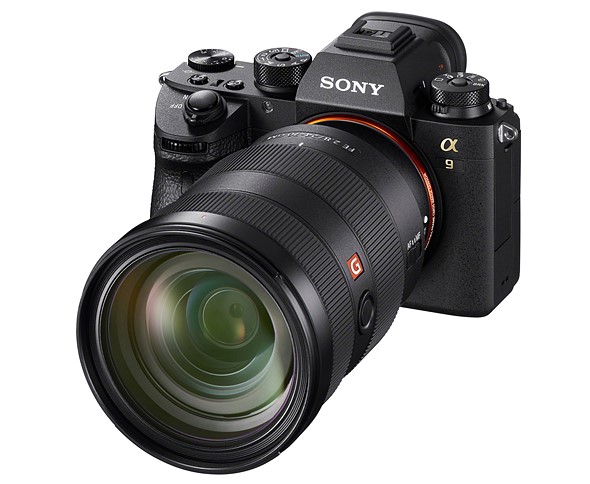Sony A9 Review

The Sony Alpha 9 is the company’s first camera aimed at professionals and sports photographers. It’s a 24MP, full frame mirrorless camera that can shoot at 20 frames per second with full autofocus. And, just as importantly, with very low viewfinder lag and no blackout while continuous shooting. That’s right, a mirrorless camera targeted at professional and sports photographers – a strike at the DSLR’s area of greatest strength. Olympus has pushed in this direction with its E-M1 Mark II, but Sony is promising both super-fast readout and full frame image quality, backed up with an expansion of its Pro Support scheme that will be needed to break into the pro market. This is ambitious stuff. All this capability stems from a stacked CMOS image sensor, which includes processing circuitry nearer the pixels and features built-in memory to deliver all this data to the off-board processors at a rate they can cope with. It’s this structure that enables the camera to shoot at 20 frames per second and do so with an electronic shutter that’s fast enough to minimize the rolling shutter effect. The fast readout also allows 60 AF/AE calculations per second, promising better subject tracking and prediction.
Key specifications
- 24MP Full Frame Stacked CMOS
- 20 fps continuous shooting with full AF (electronic shutter, 12-bit files)
- Continuous shooting buffer of up to 241 compressed Raw files (362 JPEG)
- 10 fps continuous shooting with AF when adapting lenses
- 5.0-step 5-axis image stabilization
- 3.7m dot OLED viewfinder (1280 x 960 pixels) with up to 120 fps update
- 1.44m dot rear touchscreen LCD
- Oversampled UHD 4K/24p video from full sensor width (1.24x crop for 30p)
The stacked CMOS design not only allows the super-fast readout that powers so much of the camera’s attention-grabbing spec, it also means it has all the benefits of BSI design. This means that the light-sensitive section of each pixel is closer to the surface of the sensor which, in turn, means the sensor is better at collecting light near the corners, where the incident angle will be high. It also generally means improved low light performance, and sharper pixel-level imagery thanks to lower pixel crosstalk.
Video
The a9’s fast readout sensor has huge benefits for video shooting, as well as stills. It allows the a9 to capture UHD 4K video using the full width of its sensor, still with reduced rolling shutter. This means its 24p footage is made up from 6000 x 3376 pixels: oversampling the scene by 1.56x in each direction, for more detailed footage with less risk of moire. 30p footage is oversampled 1.26x in each direction, and comes with a 1.2x crop, but shows less rolling shutter. The camera also has the headphone and mic sockets, and option to fit an adapter for twin XLR mic input. Sony calls the video footage from the a9 the ‘highest 4K movie image quality of any full-frame ILC’, which makes it all the more odd that Sony has not included its Picture Profile system of video-targeted tone and color responses, such as S-Log2 and 3, and ITU 709.

Recent Comments